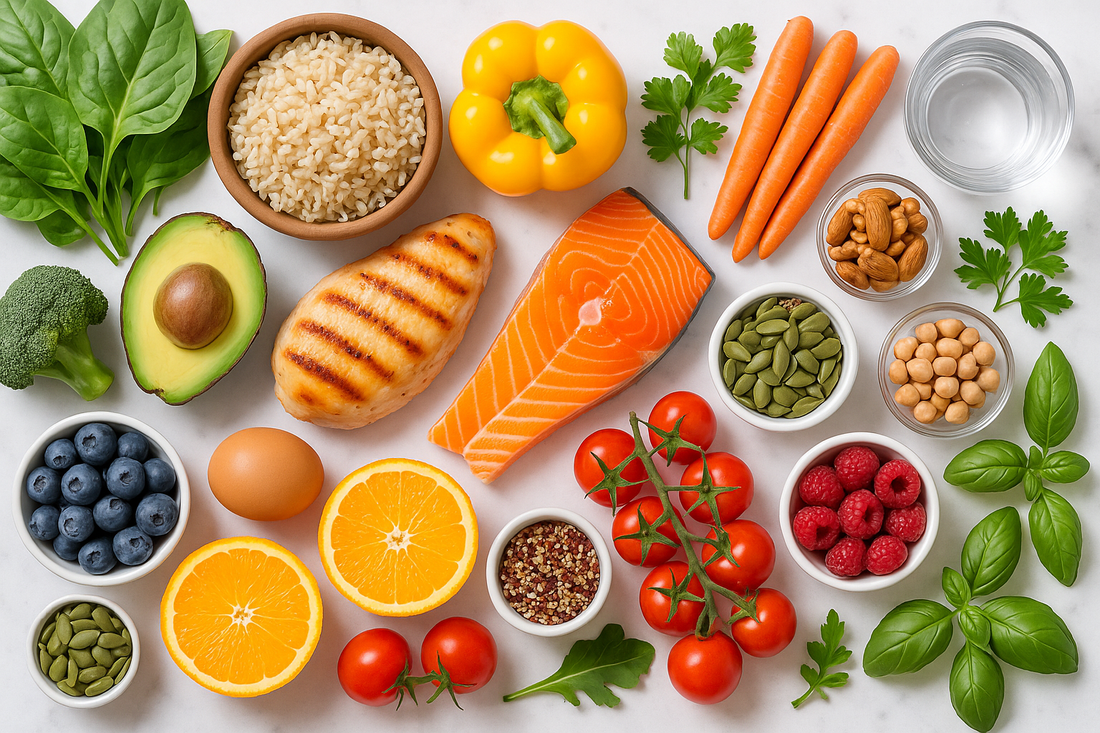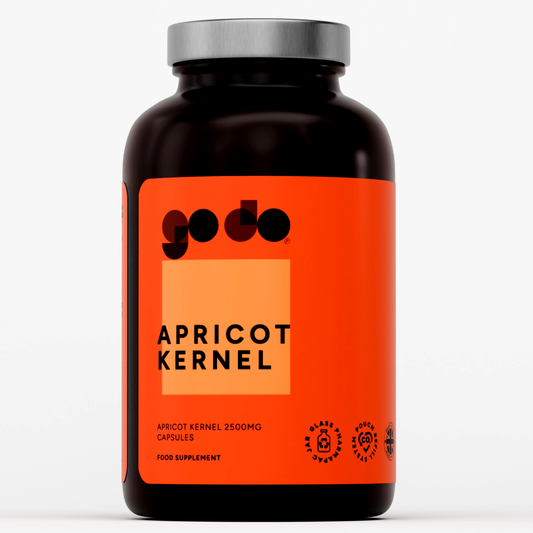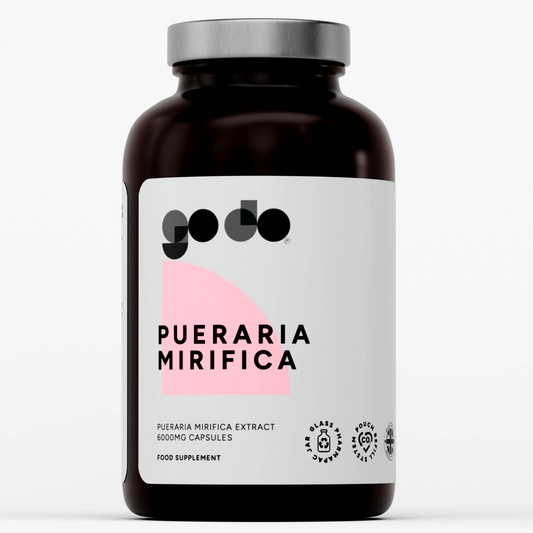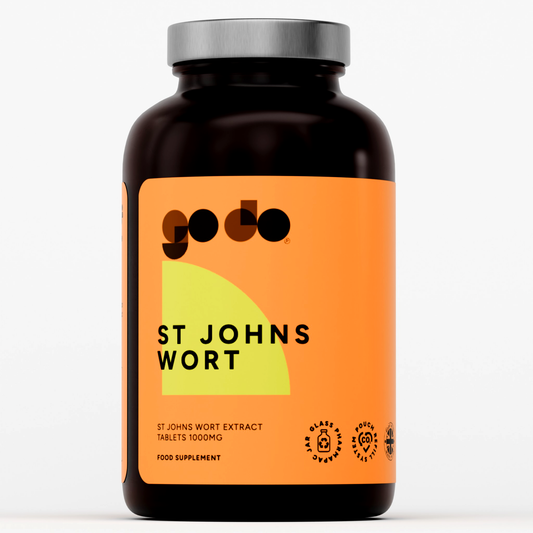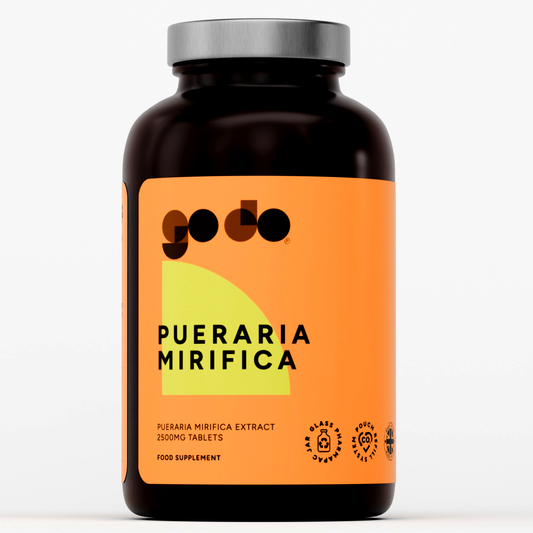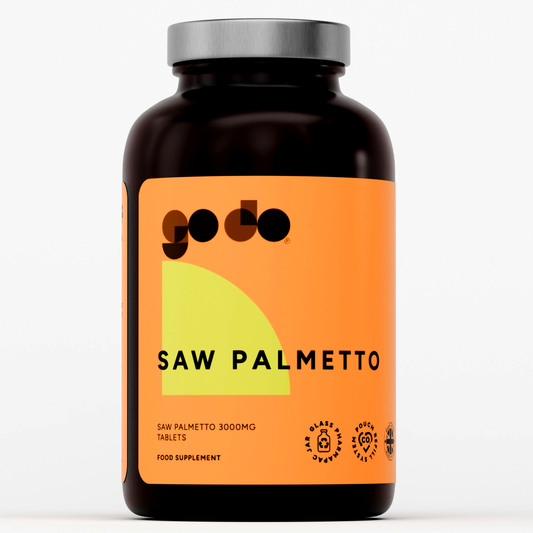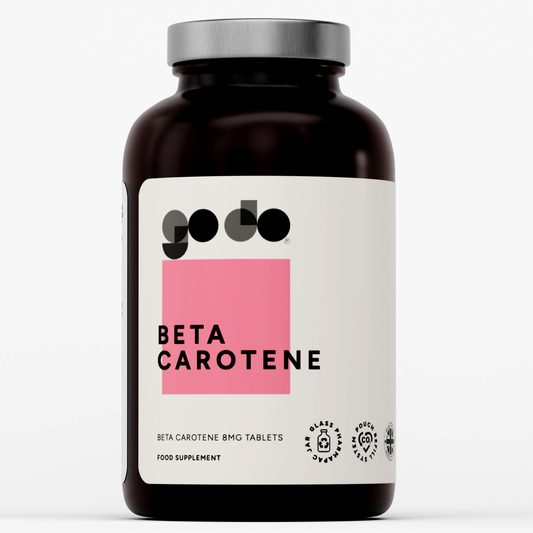The Best Foods for Clean Calories: A Practical Guide to Healthy Eating
Introduction to Clean Eating and Caloric Quality
Clean eating represents a nutritional philosophy centered on consuming whole, minimally processed foods that provide optimal nutrition while supporting long-term health and wellness goals, including achieving a clean bulk . This approach emphasizes food quality over mere caloric quantity, recognizing that the source and processing level of calories significantly impacts how the body utilizes energy for cellular function, metabolism, and overall physiological processes. Knowing your calorie count is crucial in clean eating, as it helps ensure you are consuming the right amount of energy to meet your goals, whether you are aiming for muscle gain, fat loss, or maintenance.
The concept of “clean calories” refers to energy derived from nutrient-dense, whole foods that provide essential vitamins, minerals, fiber, antioxidants, and other beneficial compounds alongside their caloric content. These foods deliver what nutritionists call “nutritional bang for your caloric buck,” meaning they provide substantial nutritional value relative to their energy content, supporting optimal health while meeting energy needs, which can also help maintain a calorie surplus . Determining how many calories are needed for your specific goal—whether bulking, cutting, or maintaining—ensures your clean eating plan is effective and tailored to your needs.
Understanding clean eating requires distinguishing between foods that nourish the body at the cellular level versus those that merely provide energy without significant nutritional benefit. Clean foods undergo minimal processing, retain their natural nutrient profiles, and avoid artificial additives, excessive added sugars, and unhealthy fats that can interfere with metabolic function and long-term health outcomes. Managing your daily calories and knowing your maintenance calorie intake are essential steps in planning a clean eating approach that supports your desired body composition.
The foundation of clean eating rests on recognizing that food serves as more than fuel—it provides the building blocks for cellular repair, hormone production, immune function, and countless other biological processes, including muscle growth . Understanding your total daily energy expenditure (TDEE) allows you to tailor your clean calorie intake to match your activity level and goals, ensuring you consume the right amount of energy for muscle gain or fat loss.
When we choose clean calories, we support these vital functions while maintaining stable energy levels, optimal body composition, and reduced risk of chronic diseases associated with poor dietary choices. The body breaks down macronutrients from clean foods efficiently, using them for energy and muscle preservation during different dietary phases such as bulking or cutting.
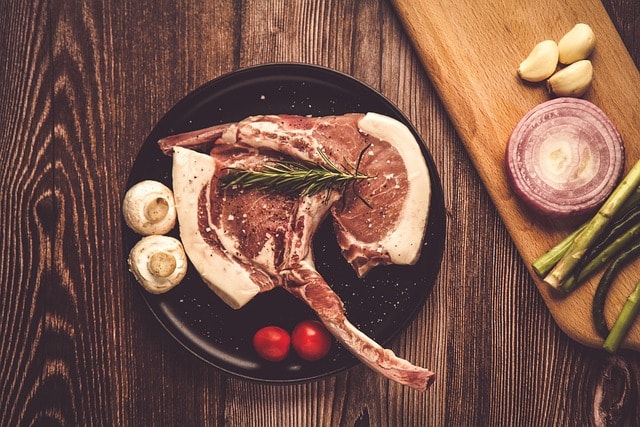
Understanding Macronutrients and Clean Sources
Premium Protein Sources for Optimal Health
High-quality protein sources form the cornerstone of clean eating, providing essential amino acids necessary for muscle maintenance, tissue repair, immune function, and numerous metabolic processes, making protein intake crucial. Clean protein sources offer complete amino acid profiles while minimizing exposure to harmful additives, excessive processing, and environmental contaminants that can compromise health benefits.
Grass-fed and pasture-raised animal proteins represent premium choices for clean eating, as these animals consume their natural diets and live in more humane conditions that translate to superior nutritional profiles, which are beneficial for a lean bulk. Grass-fed beef contains higher levels of omega-3 fatty acids, conjugated linoleic acid (CLA), and vitamin E compared to conventionally raised beef, while providing complete protein with excellent bioavailability.
Wild-caught fish and seafood offer exceptional clean protein along with beneficial omega-3 fatty acids that support cardiovascular health, brain function, and anti-inflammatory processes, all aiding in muscle gain. Species such as salmon, sardines, mackerel, and anchovies provide particularly high concentrations of EPA and DHA omega-3s while being lower on the food chain and less likely to contain significant heavy metal contamination.
Organic, free-range poultry provides lean protein with superior nutritional quality compared to conventionally raised options. Free-range chickens and turkeys that have access to outdoor environments and consume varied diets produce meat and eggs with higher omega-3 content, better fatty acid ratios, and reduced exposure to antibiotics and hormones commonly used in industrial farming. Whole eggs are also a nutrient-dense source of both high-quality protein and healthy fats, making them ideal for clean bulking and meeting daily nutritional needs.
Plant-based protein sources including legumes, quinoa, hemp seeds, and organic soy products offer clean alternatives for vegetarians and vegans while providing additional fiber, vitamins, minerals, and phytonutrients. These proteins work synergistically when combined appropriately to provide complete amino acid profiles while supporting digestive health and providing sustained energy release. Greek yogurt is another versatile, high-protein option that supports clean eating and muscle building, while also offering probiotics for gut health.

Complex Carbohydrates and Fiber-Rich Options
Clean carbohydrate sources focus on whole, unprocessed options that provide sustained energy release while delivering essential nutrients and fiber that support digestive health and metabolic function, which are important for calculating maintenance calories . These complex carbohydrates avoid the blood sugar spikes and crashes associated with refined carbohydrates while providing steady fuel for physical and mental performance.
Ancient grains including quinoa, amaranth, millet, and buckwheat offer superior nutritional profiles compared to modern refined grains, providing complete proteins, essential minerals, and fiber while being naturally gluten-free options for sensitive individuals. These grains retain their original nutrient density and provide sustained energy without the inflammatory potential of heavily processed grain products. Whole-grain bread is another minimally processed carbohydrate option that can be included for clean bulking, offering fiber and nutrients. Spreading peanut butter on whole-grain bread is a convenient way to add healthy fats and protein, increasing clean calorie intake.
Starchy vegetables such as sweet potatoes, winter squashes, and plantains provide clean carbohydrates along with vitamins A and C, potassium, and fiber that support immune function and digestive health. These whole food sources offer natural sweetness while providing complex carbohydrates that fuel activity and support recovery without requiring added sugars or processing.
Legumes and pulses including beans, lentils, and chickpeas provide a unique combination of complex carbohydrates and plant protein along with soluble fiber that supports cardiovascular health and blood sugar regulation, helping to prevent excess fat gains . These foods offer exceptional satiety value while providing folate, iron, magnesium, and other essential nutrients at relatively low caloric costs.
Fresh fruits represent nature’s clean carbohydrate source, providing natural sugars along with vitamins, minerals, antioxidants, and fiber that support overall health while satisfying sweet cravings and raising questions about the best time to eat fruit. Emphasizing lower-glycemic fruits such as berries, apples, and citrus fruits provides steady energy while maximizing antioxidant intake and supporting metabolic health.
Healthy Fats for Optimal Function
Clean fat sources provide essential fatty acids, fat-soluble vitamins, and sustained energy while supporting hormone production, brain function, and cellular membrane integrity. Quality fat sources emphasize minimally processed options with favorable fatty acid profiles that support rather than compromise long-term health outcomes.
Extra virgin olive oil represents one of the premier clean fat sources, providing monounsaturated fatty acids along with powerful antioxidants including vitamin E and polyphenols that support cardiovascular health and reduce inflammation. Cold-pressed, unfiltered varieties retain maximum nutritional value while providing versatile cooking and finishing oil options.
Avocados offer a unique whole food source of monounsaturated fats along with fiber, potassium, folate, and vitamins K and C. This nutrient-dense fruit provides satiety and sustained energy while supporting heart health and providing anti-inflammatory compounds that benefit overall wellness.
Raw nuts and seeds including almonds, walnuts, chia seeds, and flaxseeds provide healthy fats along with protein, fiber, vitamins, and minerals in convenient, portable packages. These foods offer exceptional nutrient density while providing essential omega-3 fatty acids and other beneficial compounds that support brain health and reduce inflammation.
Coconut products including virgin coconut oil and coconut meat provide medium-chain triglycerides (MCTs) that offer quick energy while supporting metabolic function and potentially providing cognitive benefits. These saturated fats are more readily used for energy than stored as body fat, making them valuable additions to clean eating approaches.
Fatty fish and fish oils provide the highest concentrations of EPA and DHA omega-3 fatty acids, which are essential for brain function, cardiovascular health, and anti-inflammatory processes. These fats cannot be produced by the body and must be obtained through diet, making quality fish and fish oil supplements crucial components of optimal nutrition.
Homemade salad dressings made with healthy fats like olive oil are an excellent way to enhance meals, add flavor, and increase nutrient absorption while avoiding processed or unhealthy options.

Nutrient-Dense Whole Foods for Maximum Benefit
Vegetables: The Foundation of Clean Nutrition
Vegetables represent the most nutrient-dense foods available, providing exceptional concentrations of vitamins, minerals, antioxidants, and fiber while contributing minimal calories to the diet. Emphasizing variety and color diversity ensures comprehensive nutrient intake while supporting optimal health through diverse phytonutrient profiles.
Dark leafy greens including spinach, kale, arugula, and Swiss chard provide extraordinary nutrient density with particularly high concentrations of vitamin K, folate, iron, and antioxidants such as lutein and zeaxanthin. These vegetables support bone health, cardiovascular function, and eye health while providing excellent volume and satiety for minimal calories.
Cruciferous vegetables including broccoli, cauliflower, Brussels sprouts, and cabbage contain unique sulfur compounds called glucosinolates that support detoxification processes and may provide cancer-protective benefits. These vegetables offer excellent sources of vitamin C, fiber, and folate while providing satisfying texture and flavor variety in clean eating approaches.
Colorful bell peppers, tomatoes, carrots, and beets provide diverse antioxidants including carotenoids, lycopene, and betalains that support immune function and provide anti-inflammatory benefits. The vibrant colors indicate high concentrations of beneficial compounds that support cellular health and protect against oxidative stress.
Allium vegetables including garlic, onions, leeks, and shallots provide sulfur compounds that support cardiovascular health and immune function while adding significant flavor without calories. These vegetables contain prebiotic compounds that support beneficial gut bacteria while providing antimicrobial and anti-inflammatory benefits.
Sea vegetables including nori, kelp, and dulse provide unique mineral profiles including iodine, which is essential for thyroid function but often lacking in land-based foods. These vegetables offer exceptional nutrient density while providing umami flavor and unique textures that enhance clean eating variety.
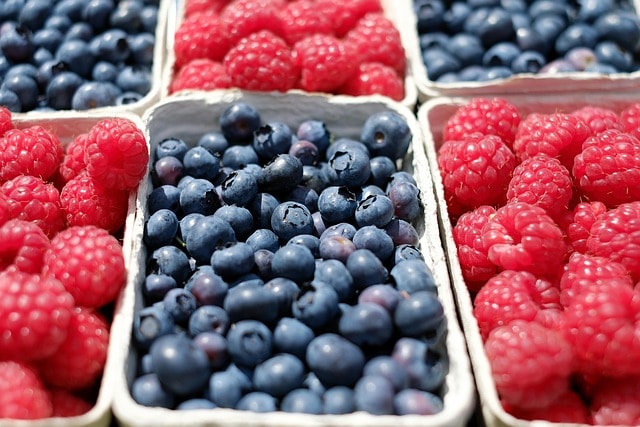
Fruits: Nature's Clean Energy Sources
Fresh fruits provide clean energy through natural sugars while delivering essential vitamins, minerals, fiber, and antioxidants that support overall health and provide protection against chronic diseases, helping to minimize the risk of fat gain . Emphasizing whole fruits over juices ensures fiber intake while moderating sugar concentration and providing satiety benefits.
Berries including blueberries, strawberries, raspberries, and blackberries offer some of the highest antioxidant concentrations among all foods while providing relatively low sugar content and high fiber. These fruits support brain health, cardiovascular function, and immune system strength while providing natural sweetness and satisfying texture.
Citrus fruits including oranges, grapefruits, lemons, and limes provide exceptional vitamin C content along with flavonoids that support immune function and cardiovascular health. These fruits offer natural acidity that enhances iron absorption while providing pectin fiber that supports digestive health and cholesterol management.
Stone fruits including peaches, plums, apricots, and cherries provide seasonal variety while delivering vitamins A and C, potassium, and beneficial plant compounds. Tart cherries, in particular, provide natural melatonin and anti-inflammatory compounds that may support sleep quality and recovery from exercise.
Tropical fruits including papaya, mango, and pineapple provide digestive enzymes along with vitamins A and C, supporting digestive health while providing exotic flavors and natural sweetness. These fruits offer variety and palatability while contributing beneficial compounds that support overall health and wellness.
Apples and pears provide soluble fiber, particularly pectin, which supports digestive health and cholesterol management while providing sustained energy release. These familiar fruits offer convenience and storage stability while providing quercetin and other beneficial compounds that support immune function and cardiovascular health.
Optimizing Meal Timing and Composition
Strategic Nutrient Timing for Enhanced Performance
Meal timing and composition significantly impact how the body utilizes nutrients for energy, recovery, and adaptation, making strategic planning essential for optimizing the benefits of clean eating. Understanding when and how to combine different nutrients enhances absorption, supports metabolic function, and aligns food intake with the body's natural rhythms and activity patterns.
Pre-workout nutrition should emphasize easily digestible carbohydrates and moderate protein while minimizing fat and fiber that could cause digestive discomfort during exercise. Pre-workout nutrition should be considered carefully, as natural options like coconut oil and coffee can also provide unique benefits. Consuming 1-2 hours before training allows for optimal digestion while providing readily available energy for performance. Options include banana with almond butter, oatmeal with berries, or dates with a small amount of nuts.
Post-workout nutrition focuses on replenishing glycogen stores and providing amino acids for muscle protein synthesis, with an optimal window occurring within 30-60 minutes after exercise completion. The combination of carbohydrates and protein in approximately a 3:1 or 4:1 ratio supports recovery while minimizing fat intake that could slow nutrient absorption during this critical period.
Morning nutrition should provide sustained energy for the day ahead while supporting cognitive function and metabolic health. Emphasizing protein and healthy fats with moderate complex carbohydrates helps stabilize blood sugar and provides satiety that can reduce cravings and support weight management throughout the day.
Evening nutrition should be lighter and focus on foods that support recovery and sleep quality while avoiding large meals that could interfere with rest. Emphasizing lean proteins with vegetables and minimizing stimulating foods or large amounts of fluid helps optimize sleep while supporting overnight recovery processes.
Nutrient timing around specific health goals requires customization based on individual needs, activity patterns, and metabolic health. Those seeking weight loss may benefit from strategic carbohydrate timing around activity, while individuals focused on muscle building may emphasize protein distribution throughout the day for optimal muscle protein synthesis.
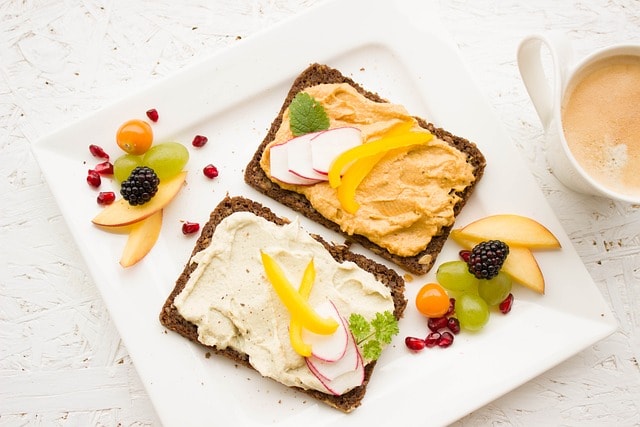
Meal Composition for Satiety and Energy Balance
Creating meals with optimal macronutrient balance supports satiety, stable energy levels, and long-term adherence to clean eating approaches while providing comprehensive nutrition that meets individual needs and goals. Understanding how different macronutrients interact helps create satisfying meals that support rather than sabotage health objectives.
Protein inclusion at each meal supports satiety, muscle protein synthesis, and metabolic function while providing the foundation for stable blood sugar levels. Aiming for 20-30 grams of high-quality protein per meal ensures adequate amino acid availability while supporting appetite control and reducing cravings between meals.
Fiber-rich carbohydrates should form the foundation of most meals, providing sustained energy while supporting digestive health and satiety. Combining different types of fiber from vegetables, fruits, and whole grains creates diverse prebiotic effects that support beneficial gut bacteria while providing optimal digestive function.
Healthy fat inclusion supports hormone production, fat-soluble vitamin absorption, and satiety while providing concentrated energy that supports sustained mental and physical performance. Including 1-2 tablespoons of healthy fats per meal provides optimal benefits without excessive calories.
Vegetable emphasis ensures comprehensive micronutrient intake while providing volume and satiety for minimal calories. Filling half the plate with non-starchy vegetables creates meals that support weight management while providing exceptional nutrient density and fiber content.
Mindful portion control considers individual needs based on activity level, body composition goals, and metabolic health while avoiding both restriction that could lead to nutrient deficiencies and excess that could compromise health objectives. Using hunger and satiety cues along with objective portion guidelines helps optimize meal composition for individual needs.
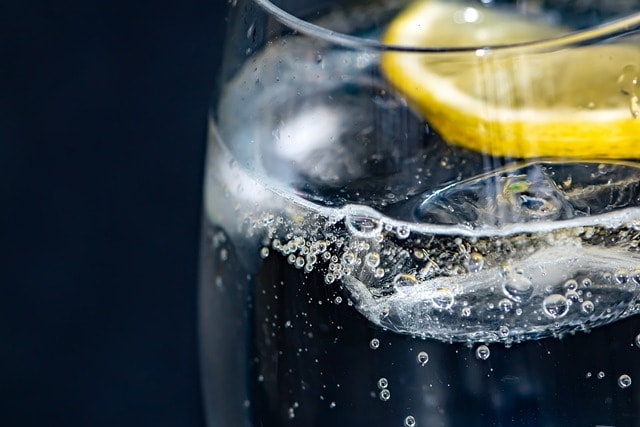
Hydration and Clean Beverages
The Foundation of Optimal Hydration
Proper hydration forms a critical component of clean eating, as water participates in virtually every bodily function including digestion, nutrient transport, temperature regulation, and waste elimination, especially when avoiding junk food . Clean hydration emphasizes pure water sources while incorporating beverages that provide additional health benefits without compromising overall nutritional goals.
Filtered water represents the cleanest hydration choice, removing chlorine, heavy metals, and other contaminants while preserving essential minerals when appropriate filtration methods are used. The quality of water significantly impacts overall health, making investment in water filtration systems worthwhile for long-term wellness and optimal hydration.
Natural mineral water provides hydration along with beneficial minerals including calcium, magnesium, and trace elements that support various physiological functions. These waters offer excellent options for individuals with increased mineral needs or those seeking to enhance their mineral intake through beverages.
Herbal teas provide hydration along with beneficial plant compounds that support various aspects of health without adding calories or caffeine. Options such as chamomile, peppermint, ginger, and turmeric teas offer specific health benefits while contributing to daily fluid intake and providing variety in beverage choices.
Green tea offers hydration along with powerful antioxidants including catechins that support cardiovascular health, brain function, and metabolic health. The moderate caffeine content provides gentle energy enhancement while the L-theanine content promotes calm alertness and stress reduction.
Coconut water provides natural electrolytes including potassium and magnesium while offering a clean alternative to commercial sports drinks. This natural beverage supports hydration and electrolyte balance without artificial additives or excessive sugar content, making it ideal for post-exercise hydration or hot weather fluid replacement.

Beverages to Limit or Avoid
Clean eating requires avoiding beverages that provide empty calories, artificial additives, or compounds that interfere with optimal health and nutrition goals, which is often a concern with a dirty bulk . Understanding which beverages to limit or eliminate helps optimize hydration while supporting overall dietary quality and health outcomes.
Sugar-sweetened beverages including sodas, fruit juices, and sweetened teas provide concentrated calories without beneficial nutrients while causing rapid blood sugar spikes that can interfere with metabolic health. These beverages contribute to weight gain, dental problems, and increased risk of chronic diseases when consumed regularly.
Artificially sweetened beverages may not provide calories but contain compounds that could potentially interfere with gut bacteria, glucose metabolism, and taste preferences for naturally sweet foods. While research continues on artificial sweetener safety, minimizing exposure aligns with clean eating principles of avoiding artificial additives.
Excessive alcohol consumption provides empty calories while interfering with nutrient absorption, sleep quality, and recovery processes. While moderate alcohol consumption may fit within some clean eating approaches, minimizing intake supports optimal health and allows for better utilization of nutrient-dense foods and beverages.
Energy drinks typically contain excessive caffeine along with artificial additives, sugars, and stimulants that can interfere with natural energy regulation and sleep patterns. These beverages often provide temporary energy followed by crashes that can disrupt stable energy levels and overall well-being.
Commercial fruit juices, even those labeled as natural or organic, provide concentrated fruit sugars without the fiber and nutrients found in whole fruits. These beverages can contribute to blood sugar instability and excessive calorie intake while displacing more nutritious beverage options.

Meal Planning and Preparation Strategies
Efficient Meal Planning for Success
Successful clean eating requires strategic meal planning that ensures nutritious options are consistently available while minimizing reliance on processed convenience foods or poor food choices made under time pressure. Effective planning reduces stress around food decisions while supporting adherence to clean eating principles.
Weekly meal planning begins with assessing the upcoming week's schedule, activity levels, and potential challenges that might interfere with clean eating goals. Planning meals around known busy periods, social events, and travel helps ensure appropriate preparations are made to maintain clean eating consistency.
Batch cooking and meal preparation strategies can significantly reduce daily food preparation time while ensuring clean options are readily available throughout the week. Preparing proteins, grains, and chopped vegetables in advance creates building blocks for quick, nutritious meals throughout busy weekdays.
Shopping list organization based on planned meals reduces impulse purchases while ensuring all necessary ingredients are available for successful meal execution. Organizing lists by store sections and prioritizing whole foods over processed options supports efficient shopping while maintaining clean eating focus.
Seasonal meal planning takes advantage of peak nutrient content and flavors while supporting local agriculture and reducing environmental impact. Planning meals around seasonal produce ensures optimal nutrient intake while providing variety and supporting sustainable eating practices.
Flexibility within structure allows for adaptation when schedules change or unexpected events occur, preventing the abandonment of clean eating goals due to rigid planning that cannot accommodate life's realities. Building in alternatives and backup options supports long-term success.
Food Storage and Preservation
Proper food storage techniques preserve nutrient content while extending shelf life and reducing food waste, supporting both the nutritional and economic aspects of clean eating. Understanding optimal storage conditions for different foods helps maintain quality while minimizing the need for preservatives or processed alternatives.
Fresh produce storage requires understanding which items benefit from refrigeration versus room temperature storage, as improper storage can accelerate nutrient loss and spoilage. Items such as tomatoes, bananas, and avocados perform better at room temperature while leafy greens and berries require refrigeration for optimal preservation.
Protein storage and safety become particularly important when emphasizing fresh, minimally processed options that may be more perishable than highly processed alternatives. Understanding safe storage times and temperatures for different proteins helps prevent foodborne illness while maintaining quality and nutrient content.
Grain and legume storage in airtight containers protects against pest infiltration while preserving freshness and preventing rancidity in nuts and seeds. Proper storage extends shelf life while maintaining nutritional quality, making bulk purchasing of clean staples more practical and economical.
Freezing techniques can preserve seasonal produce at peak ripeness while providing convenient options for quick meal preparation. Understanding which items freeze well and proper freezing techniques helps maintain nutritional quality while extending availability of preferred clean foods.
Container selection and organization systems support efficient meal preparation while maintaining food safety and quality. Choosing appropriate storage containers and implementing organization systems reduces food waste while making clean eating more convenient and sustainable.
Special Considerations for Different Populations
Clean Eating for Athletes and Active Individuals
Athletes and highly active individuals have increased caloric and nutrient needs that require careful attention to timing, quantity, and quality of food choices while maintaining clean eating principles. Meeting these enhanced needs through whole foods requires strategic planning and potentially larger volumes of clean foods.
Increased carbohydrate needs for endurance athletes must be met through clean sources that provide sustained energy while supporting glycogen replenishment and recovery. Emphasizing complex carbohydrates from whole grains, starchy vegetables, and fruits provides necessary fuel while maintaining nutrient density and avoiding processed sports nutrition products when possible.
Protein requirements increase significantly for athletes engaged in strength training or endurance activities, requiring strategic timing and distribution throughout the day to support muscle protein synthesis and recovery. Meeting these needs through whole food sources may require larger portions or more frequent meals compared to sedentary individuals, and in such cases, a convenient source of protein like protein bars can help support recovery and nutrient intake.
Hydration and electrolyte needs escalate during intense training or hot weather conditions, requiring attention to both fluid volume and mineral replacement. Clean hydration strategies emphasizing water, natural electrolyte sources, and timing around activity help maintain performance while supporting recovery.
Recovery nutrition becomes particularly critical for athletes, with the post-exercise period requiring specific attention to carbohydrate and protein timing and ratios. Understanding how to optimize recovery through clean food choices supports adaptation and performance while minimizing reliance on processed sports nutrition products.
Performance periodization may require adjusting clean eating approaches based on training phases, competition schedules, and seasonal demands. Understanding how to modify food choices and timing while maintaining clean eating principles supports optimal performance throughout different training cycles.
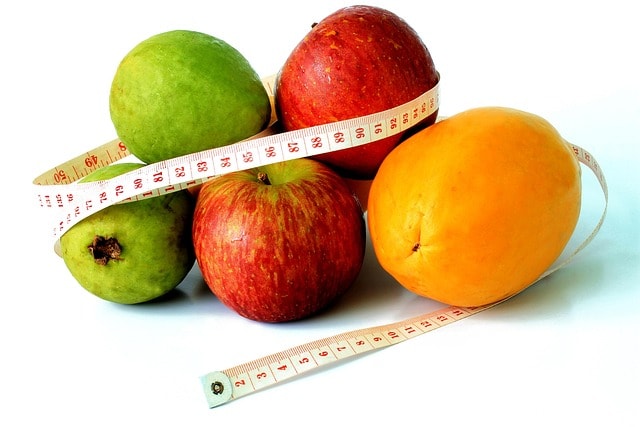
Family-Friendly Clean Eating
Implementing clean eating principles for families requires strategies that accommodate different preferences, schedules, and developmental needs while establishing healthy eating patterns that can last a lifetime. Creating positive associations with clean foods while gradually transitioning away from processed options supports long-term success.
Child-friendly preparation methods can make clean foods more appealing while maintaining nutritional quality and introducing variety. Techniques such as creative presentation, involving children in food preparation, and gradually introducing new foods help establish positive relationships with clean eating.
Meal modifications that allow for individual preferences within clean eating frameworks help accommodate different family members' needs while maintaining overall dietary quality. Providing base meals with optional additions or modifications reduces meal preparation complexity while supporting individual needs.
Education and involvement strategies help family members understand the benefits of clean eating while developing practical skills for food selection and preparation. Age-appropriate nutrition education and cooking involvement create ownership and understanding that support long-term adherence.
Budget considerations become particularly important for families, requiring strategies for implementing clean eating principles while managing food costs. Emphasis on seasonal produce, bulk purchasing of staples, and strategic meal planning helps make clean eating economically sustainable for families.
Social situations and peer pressure can challenge family clean eating goals, requiring strategies for navigating school events, parties, and social gatherings while maintaining dietary principles. Teaching children how to make good choices in various situations supports independence and long-term success.
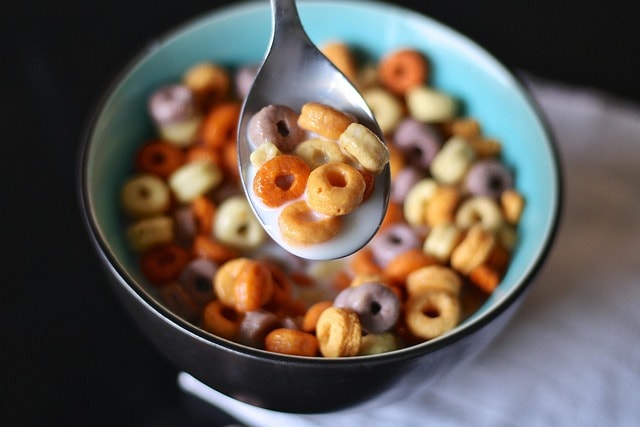
Conclusion: Building Sustainable Clean Eating Habits
Clean eating represents more than a temporary dietary approach—it's a sustainable lifestyle that supports optimal health through mindful food choices that nourish the body while respecting both personal wellness and environmental considerations. The emphasis on whole, minimally processed foods provides a framework that can adapt to individual needs while maintaining core principles that support long-term health.
The journey toward clean eating requires patience and gradual implementation rather than dramatic overnight changes that prove unsustainable. Success comes through progressively replacing processed options with whole food alternatives while developing new shopping, cooking, and eating habits that eventually become natural and enjoyable rather than restrictive or burdensome.
Understanding that clean eating is not about perfection but rather about making better choices consistently over time helps maintain motivation while preventing the all-or-nothing thinking that often sabotages dietary improvements. The 80/20 approach, where 80% of food choices align with clean eating principles while allowing 20% flexibility, provides a sustainable framework that accommodates real-life situations.
The benefits of clean eating extend beyond individual health to include environmental sustainability, support for ethical food production, and connection to food sources and preparation that enriches life beyond mere nutrition. These broader benefits provide additional motivation and meaning that support long-term adherence when health benefits alone might not be sufficient.
Building a community around clean eating through family involvement, social connections, and educational resources provides support and accountability that enhances success while making the journey more enjoyable. Sharing meals, recipes, and experiences creates positive associations that reinforce clean eating choices while providing practical support for implementation.
The investment in clean eating pays dividends in energy, health, longevity, and quality of life that extend far beyond the additional time and cost that may be required initially. As clean eating habits become established, the convenience of processed foods becomes less appealing while the satisfaction and vitality from clean foods provide ongoing motivation for continued adherence.
Ultimately, clean eating represents a return to fundamental nutrition principles that honor the body's needs while working in harmony with natural food systems. This approach provides a reliable foundation for optimal health that can adapt to changing life circumstances while maintaining core principles that support wellness throughout all stages of life. The key lies in beginning where you are, making gradual improvements, and allowing the benefits of clean eating to provide motivation for continued progress toward optimal health and vitality.

The Risks of Dirty Bulking
From my years of experience guiding clients toward optimal wellness, I've witnessed how dirty bulking—that approach where folks consume endless calories without considering the quality of their nourishment—can truly work against both their health and the physique goals they're so passionately pursuing. While I deeply understand the intention behind wanting to promote muscle growth, this path often leads our bodies to accumulate excessive fat, raising body fat levels and actually hiding the beautiful muscle development you're working so diligently to achieve. When we fill ourselves with heavily processed foods, added sugars, and unhealthy fats—which are unfortunately common in these bulking approaches—we're elevating our risk of heart disease and other chronic health challenges that I've seen too often in my practice. These foods typically lack the essential nutrients our bodies crave and are heavy in saturated fats, which can genuinely impact our overall wellness and actually hinder the muscle growth and recovery we're seeking.
I believe deeply in the power of nourishing our bodies with intention, and relying on dirty bulking means missing out on the incredible benefits of nutrient-dense, whole foods like lean meats, fatty fish, and healthy fats that I'm so passionate about. These beautiful, natural foods don't just support muscle development—they help minimize unwanted fat gain by providing the essential nutrients your body needs for optimal performance and healing. In contrast, a diet heavy in processed foods and empty calories often leads to nutrient deficiencies, depleted energy levels, and long-term health complications that I've helped many clients overcome. For truly sustainable muscle growth and a healthy body composition that honors your whole self, I encourage focusing on a balanced, nourishing approach rich in whole foods, healthy fats, and lean protein sources, rather than simply consuming more calories from just any source. This holistic path empowers you to achieve your goals while supporting your body's natural wisdom.
Avoiding Common Mistakes on Your Clean Eating Journey
Embarking on a clean eating journey during a lean bulking phase can feel overwhelming, dear, but with gentle guidance and patience with yourself, you can navigate this path successfully. One tender mistake I often see is when people haven't quite discovered their true maintenance calories yet, or they're not nourishing themselves with enough of a calorie surplus to lovingly support their muscle growth. Without this extra nourishment, your beautiful body simply doesn't have the energy it needs to build and repair those hardworking muscles. Another common oversight that touches my heart is when people underestimate the vital importance of protein intake—I always encourage aiming for about 1 gram of protein per pound of body weight each day, as this gentle ratio supports your body's natural muscle repair and growth processes.
It's also so easy, bless your heart, to overlook the essential role that healthy fats play in nurturing your overall wellness. Those wonderful fats from nature's gifts like nuts, seeds, and creamy avocados are absolutely crucial for your body's hormone production and holistic health—please don't neglect these treasures. Many souls also find themselves reaching for processed convenience foods when life gets busy, rather than embracing the wisdom of whole, minimally processed foods such as sweet potatoes, brown rice, and lean meats that nature provides. These wholesome foods offer exactly the nutrients your precious body craves for clean bulking and optimal vitality. To lovingly avoid these gentle pitfalls, I encourage you to focus on a beautifully balanced approach that includes a rainbow of whole foods, nourishing lean proteins, and those essential healthy fats, while remembering to keep yourself well-hydrated with pure, clean water. By tending to these important details with compassion for yourself, you'll create the foundation for a truly successful and sustainable clean bulking journey that honors your body's wisdom.
The Importance of Patience in Achieving Results
Building muscle while gently reducing body fat through what we call lean bulking is truly a beautiful journey that honors your body's natural wisdom and requires the kind of patience I've learned to cherish over my years in health and wellness. This nurturing approach to body composition involves lovingly managing your nourishment—ensuring you're providing just enough fuel to support your body's muscle-building processes, while being mindful not to overwhelm it with excess that might lead to unwanted fat storage. I've seen too many dear souls try to rush this delicate process by dramatically increasing their intake or turning to what some call "dirty bulking," and it breaks my heart when this leads to frustration and can even compromise their overall wellbeing.
Embracing patience in this journey allows you to focus on what I call the gentle art of progressive overload in your strength training—gradually and mindfully increasing the challenge to your muscles so they can grow stronger in their own time. This steady, respectful approach to your body, combined with nourishing whole foods that speak to your individual needs, helps you sidestep the heartache of quick fixes or trendy eating patterns that can derail the beautiful progress you're making. When you cultivate this patient, loving mindset toward your health, you'll find yourself naturally drawn to sustainable habits that feel right in your body, and you'll ultimately reach your muscle-building and body composition dreams while honoring your overall health and wellbeing.
Seeking Support and Building a Healthy Eating Community
Creating a nurturing support network and connecting with others who share your wholesome eating and lean bulking aspirations can truly transform your wellness journey in the most beautiful ways. Embracing a caring community—whether through online wellness circles, social media groups, or local fitness gatherings—offers gentle motivation, loving accountability, and a treasure trove of heartfelt guidance. When you share your personal progress, honest challenges, and nourishing meal inspirations with kindred spirits, you'll find yourself naturally staying aligned with your calorie goals, clean bulking nourishment, and strength-building practices.
A compassionate community can also lovingly guide you through managing those natural cravings for processed foods, gracefully navigating social gatherings, and discovering fresh recipes that keep your meals both delightful and purposeful for your unique journey. Through this warm exchange of wisdom and personal experiences, you'll receive invaluable insights and heartfelt encouragement, making your clean bulking path more sustainable and deeply fulfilling. Surrounding yourself with understanding souls who honor and support your dedication to wholesome nourishment can gently guide you toward staying true to your goals and achieving lasting, meaningful transformation.
